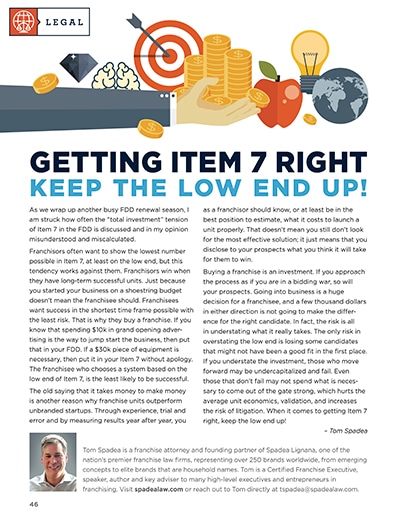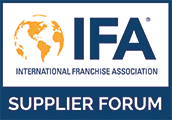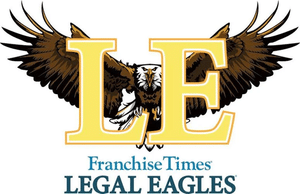This article by Tom Spadea was featured in the June 2021 issue of Franchise Dictionary Magazine.
Getting Item 7 Right: Keep the Low End Up!

Franchisors often want to show the lowest number possible in Item 7, at least on the low end, but this tendency works against them. Franchisors win when they have long-term successful units. Just because you started your business on a shoestring budget doesn’t mean the franchisee should. Franchisees want success in the shortest time frame possible with the least risk. That is why they buy a franchise. If you know that spending $10k in grand opening advertising is the way to jump start the business, then put that in your FDD. If a $30k piece of equipment is necessary, then put it in your Item 7 without apology. The franchisee who chooses a system based on the low end of Item 7, is the least likely to be successful.
The old saying that it takes money to make money is another reason why franchise units outperform unbranded startups. Through experience, trial and error and by measuring results year after year, you as a franchisor should know, or at least be in the best position to estimate, what it costs to launch a unit properly. That doesn’t mean you still don’t look for the most effective solution; it just means that you disclose to your prospects what you think it will take for them to win.
Buying a franchise is an investment. If you approach the process as if you are in a bidding war, so will your prospects. Going into business is a huge decision for a franchisee, and a few thousand dollars in either direction is not going to make the difference for the right candidate. In fact, the risk is all in understating what it really takes. The only risk in overstating the low end is losing some candidates that might not have been a good fit in the first place. If you understate the investment, those who move forward may be undercapitalized and fail. Even those that don’t fail may not spend what is necessary to come out of the gate strong, which hurts the average unit economics, validation, and increases the risk of litigation. When it comes to getting Item 7 right, keep the low end up!
To see all of Tom’s featured articles on The Franchise Dictionary Magazine, visit this page.







